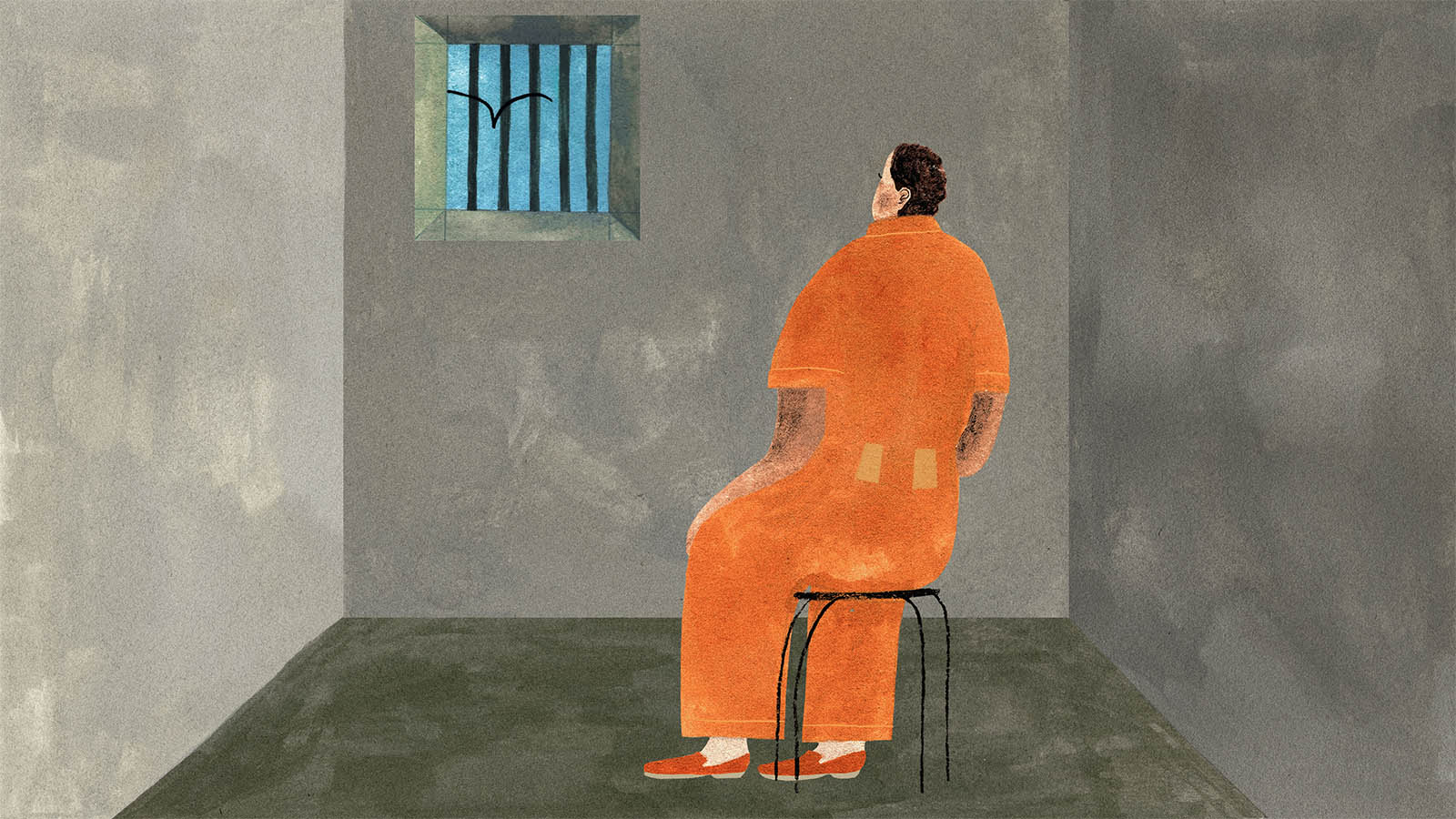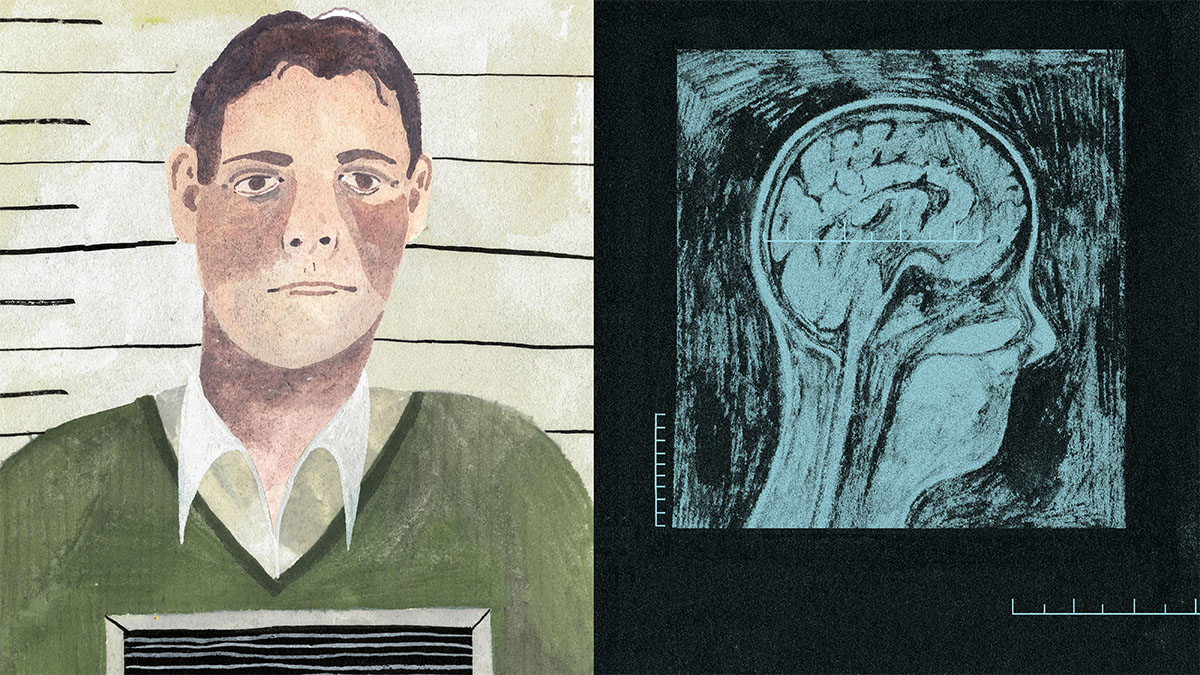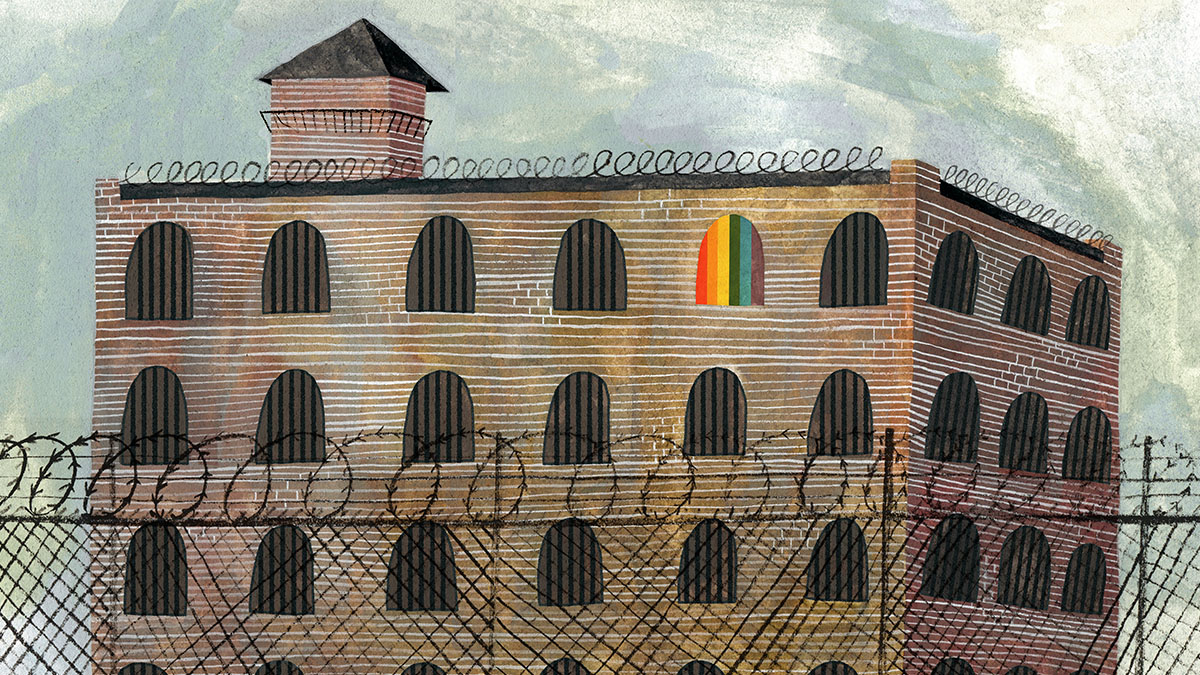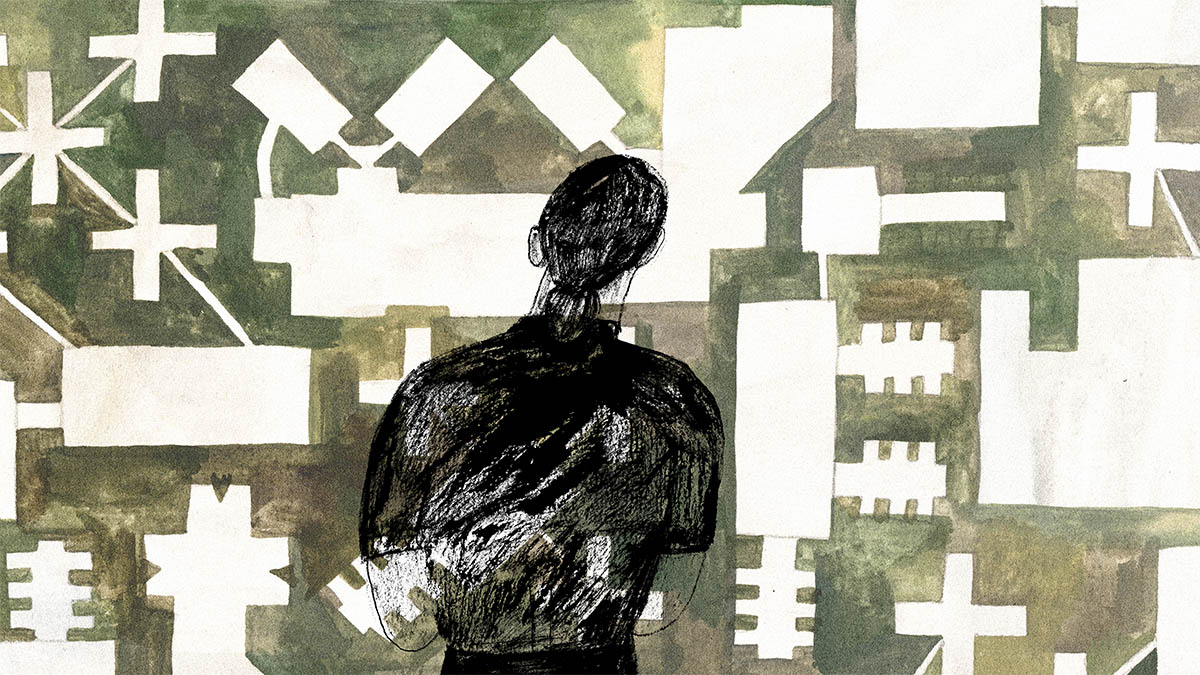
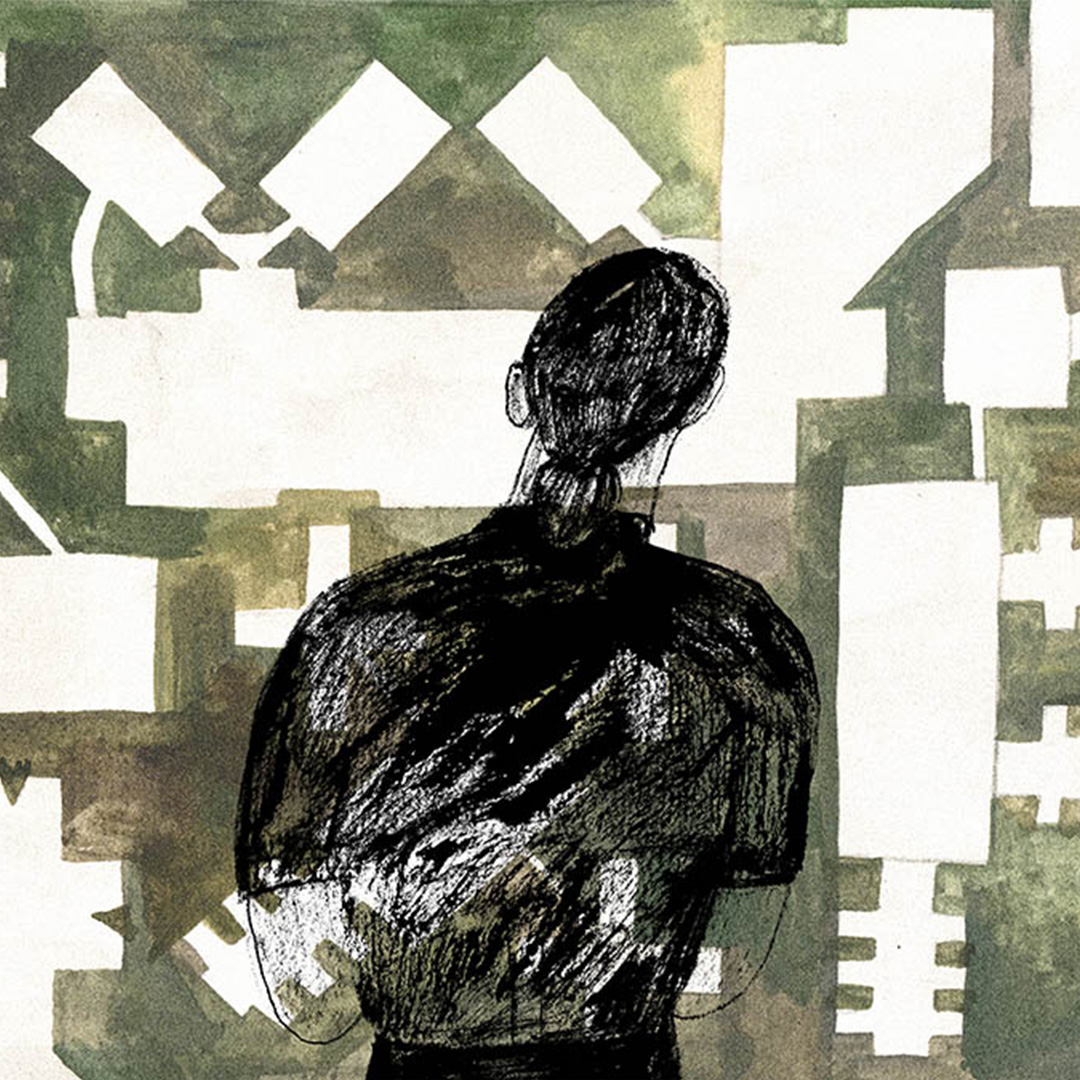
On a Monday morning this September, I step into the courthouse at College Park, a dimly lit hallway of courtrooms located above a Winners and a food court at the corner of College and Yonge. Despite being above ground, it feels like I’m in a basement, the halls and rooms completely devoid of natural light.
In the courtroom, each accused seeking bail stands in a plastic walled box. I sit in a row of wooden benches resembling pews and listen to the Crown and duty counsel. Throughout the morning, I learn who is and isn’t a Canadian citizen, where people were born, when they came to Canada. I hear lists of criminal records, the charges from a failure to comply with bail conditions often exceeding the actual charges two or threefold. I hear stories of people who are unemployed, on Ontario Works, living at shelters, and locked into a continuous cycle of interaction with the criminal justice system.
What we commonly call bail is actually judicial interim release, in legalese. Many people are granted release, either by the police at the station or in a short, largely uncontested affair in court. In other cases, however, the Crown will seek to detain the accused until their trial or the resolution of their matter, citing one of three grounds of detention: that they may not show up to court when required, that they are at significant risk of committing another crime if they are released, or that the public belief in the administration of justice would be weakened by granting them bail.
These are known as the primary, secondary, and tertiary reasons for detention, and they disproportionately affect certain groups—people who are Black, Indigenous, without homes, and mentally ill. Indigenous people make up approximately 25 percent of those held without bail, but only four percent of the population. Some individuals will be denied bail because of a lack of a surety with the finances to pay, essentially detained because of poverty. Others will be detained later because they are unable to comply with the conditions of their initial release, conditions that often set the accused up to fail—the person with substance use issues told to immediately quit using, the homeless man told to notify police within 24 hours of his change of address.
Mark tells me he thought about pleading guilty. “You’re in super-max when you’re innocent, medium when you’re sentenced.”
One by one, the first set of people on the morning’s docket are released on their own recognizance, a promise to pay the court if they fail to abide by their bail conditions. There are also six contested bail matters, however, and by the 1:00 pm lunch break, none of them have been addressed. The Crown indicates that he must leave by 4:00 pm, leaving most of those who have been waiting patiently—including an individual who has been held since June—to wait yet another day.
They will return to detention, where they’ll rejoin the growing population of people in provincial jails who are not convicted criminals but “on remand,” in custody awaiting trial. At the last Statistics Canada count, people on remand made up 57 percent of those incarcerated in the provincial system. They have outnumbered those serving sentences since 2004, and their numbers have been steadily increasing for the past 15 years, even as the rate of crime and convicted offenders continues to drop.
In a cruel twist of irony, life on remand is often worse than life in a federal prison. It is a lonely, boring, mentally draining place that seems to only serve to isolate, irritate, and exacerbate any troubles the person is facing in their life, the troubles that usually got them sent to detention in the first place. Detainees are held in maximum-security provincial institutions under the most severe restrictions regardless of the nature of the allegation or their criminal history. Unlike federal prisons, which have life skills, work, reintegration, rehab, and literacy programs, adults held in pre-trial detention have no chance to work and few opportunities for programming, education, and exercise.
People on remand have been accused, not convicted. Approximately two-thirds of them are accused of non-violent offenses. A few days or a few weeks on remand can interfere with a person’s employment, housing, custody, social assistance, and health. Yet they remain, locked up for days, months, even years at a time.
The first thing to know about life on remand is that it’s next-to-impossible to speak to someone on the outside. Visitors need to be on a prisoner’s visitor’s list and, if they’re not, they either have to send a detainee a letter and ask to be added or pass on a message through a lawyer, then wait the three weeks it takes to process. With the shuttering of smaller jails and the proliferation of large, mega-detention centres, detainees can be sent to remand centres far from their community, making access even more difficult.
Communication via phone is almost as tough. Through a provincial prison phone system administered by Bell Canada, detainees can only make collect calls, even to local numbers, and they can’t call cellphones. Loved ones need to get a landline (or buy a service that mimics one on your cell) and pay the high costs of collect calls, which can run hundreds or thousands a month. Calls are limited to 20-minute intervals, with the line automatically disconnecting three minutes after the warning light comes on at minute 17.
In the age of technology and email, this process seems byzantine and outdated. Letters? Collect calls? Even the US, with their regressive for-profit prison system, has allowed monitored emailing since 2009. The result is that people are cut off. Cut off from the love, friendship, and support of their community. Cut off from setting up medical care, from arranging treatment or re-integration programs for themselves. There is no rationale for this. Access to education, treatment, care, support, and legal services have all been shown to reduce recidivism, time and time again.
After making my way through the convoluted process, buying a service that lets my cellphone take collect calls, I finally connect with Justin*, a mid-30s man from Hamilton, who has been held at Toronto South Detention Centre for over a year and a half, first in pre-trial detention for a year, and then in the wing for those who have been sentenced since the end of May. Justin is calm and forthcoming during our conversation, open about his background and criminal history. He made it to grade nine before dropping out and now he dreams of getting his GED, getting some business training, maybe opening his own barber shop. He’s been trying to get treatment for his self-admitted anger and substance issues. “It’s really difficult,” he says. “There are no programs.”
The week after we speak, Justin is going to be transferred to a treatment centre to serve the rest of his sentence. There is palpable relief and excitement in his voice. “There’s going to be schooling, substance abuse, anger awareness,” he says. “Probably some stuff on release management too.” I ask him if he tried to get pre-trial detention when he was last charged. “No. I have a long criminal record. Bail is a no go, I’d probably get denied, so I just waive my bail.” When he talks about the lack of programming, he is brief, but thoughtful. “It’s important to have more programming, and an awareness of what people need so they don’t end up re-offending and going in and out of jail.”
Chris Rudnicki, a criminal defense lawyer in Toronto, notes that at Toronto South there are just a few one-off courses on life skills and anger management that aren’t taken seriously. He tells me that the school equivalency program at the Toronto East Detention Centre isn’t running, as the worker in charge quit. There are no psychiatrists, no one-on-one therapy for those who need it. “If something is really bad, they take you to the hospital,” Rudnicki says.
One of Rudnicki’s clients is Mark*, a 23-year-old Brampton native who recently spent two months at Maplehurst, a remand facility in Milton, and six months at Toronto South before beating his charges. When I ask about services, Mark tells me about the mobile library that comes around at random times, the few anger management and financial management sessions, and the spiritual services—Christian, Islamic and Jewish. He also notes the lack of help for those suffering from mental illness. “I can see, they’re just lost, and they don’t help deal with that.” But he mostly recounts boredom and frustration, out on the range for 13 hours a day. “I read books, worked out here and there.”
“After nearly forty years of working in the system I have come to realize there is often only a thin and blurry line between victim and offender.”
Like everyone else I spoke to about remand centres, Mark mentioned the proliferation of lockdowns, during which detainees are locked into their cell for almost the entire day. It’s akin to a two-man solitary confinement. Lockdown can happen when there is an emergency or an event. But some say it’s increasingly used when there simply isn’t enough staff. Harpreet Saini, a criminal lawyer based in Brampton, tells me about the curious coincidence of lockdowns happening regularly during long weekends. Justin says he is in lockdown every Saturday and Sunday at the South, sometimes during the week as well.
“Out of my eight months, I spent five to six of them in lockdown,” says Mark. He tells me that he thought about pleading—the time in detention goes by so slowly, and he didn’t want to be there anymore. “You’re in super-max when you’re innocent, medium when you’re sentenced,” he says. “I remember a whole month of lockdown. People go crazy, start retaliating against the system. Not giving back their food trays, small things like that.”
Ashli Pinnock, a Toronto criminal lawyer, says that lockdown interferes with her ability to contact her clients. “I miss forty percent of access defence calls because they can’t get to a phone during lockdown. If I’m visiting, I call the day before, the morning of, 15 minutes before, because if there’s lockdown, I can’t see my client.” The frequency of lockdowns can also have serious health consequences. “I have clients who have not been able to access their medication, because of lockdown,” says Pinnock. “And if they get off cycle…” Her voice trails off.
While about 75 percent of people get out of remand in under a month, for others, this can stretch on for months, even years. Saini tells me of a client held in detention whose trial date has just been set for November 2020, 30 months after his arrest. Jordana Goldlist, a criminal lawyer in Toronto, tells me about one client held for four and a half years, first in pre-trial detention, then during trial, detention pending a mistrial, and finally a retrial. She mentions people with serious substance use issues thrown into detention with almost nothing in the way of rehab, a client in Brampton who can’t get his medication, a psychiatrist who shows up once a week. “Detainees don’t have access to books. That for me is unbelievable,” says Goldlist. “I don’t think anyone making these decisions actually wants to reduce crime.”
To me, the system doesn’t make sense—financially, morally, or logically. Crimes rates are continually falling, yet the number of people in remand is growing. According to the John Howard Society, it costs $217 per day to detain someone, in contrast to the $5 a day to monitor someone out on bail. Holding someone in pre-trial and restricting their liberty and freedoms before they have even been convicted should be the absolute last resort, especially since our Constitution itself enshrines a right to reasonable bail.
If we truly wanted to help people, to reduce reoffending, to make our society safer, and change the course of someone’s life, our system would be radically different. We would recognize that many people who interact with the criminal justice system are themselves victims. As noted by Howard Sapers, a member of the Independent Review of Ontario Corrections Team, in the preface to the group’s 2017 report, “after nearly 40 years of working in the system I have come to realize there is often only a thin and blurry line between victim and offender. Many men and women in conflict with the law have themselves lived lives full of personal trauma and victimization. Meeting the needs of offenders often amounts to meeting the needs of victims.”
A remand centre could be a stepping stone to care and a better life, with education and programming like counselling, physical activity, job retraining, and support for trauma and substance use issues. We could get those with mental health issues the help they need, instead of pushing them into a system that revictimizes them and sets them up to fail, using our jails as a poor man’s version of hospitals.
It can be hard to get people, policy makers, and politicians to care about the accused and offenders. Building a better carceral system is not a sexy election issue, particularly given the fear of being labelled as “soft on crime.” But the costs—moral, societal, and financial—are increasingly too much for our system to bear.
*Names of detainees have been changed.

